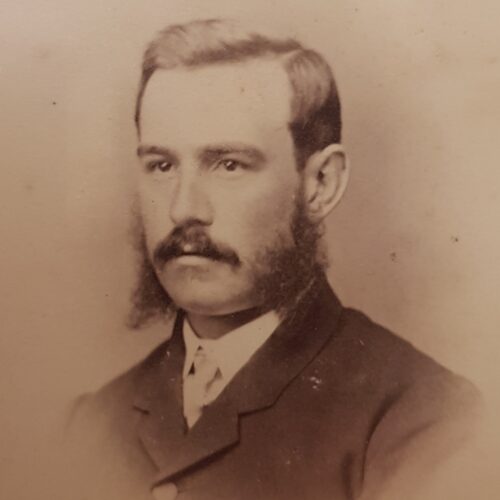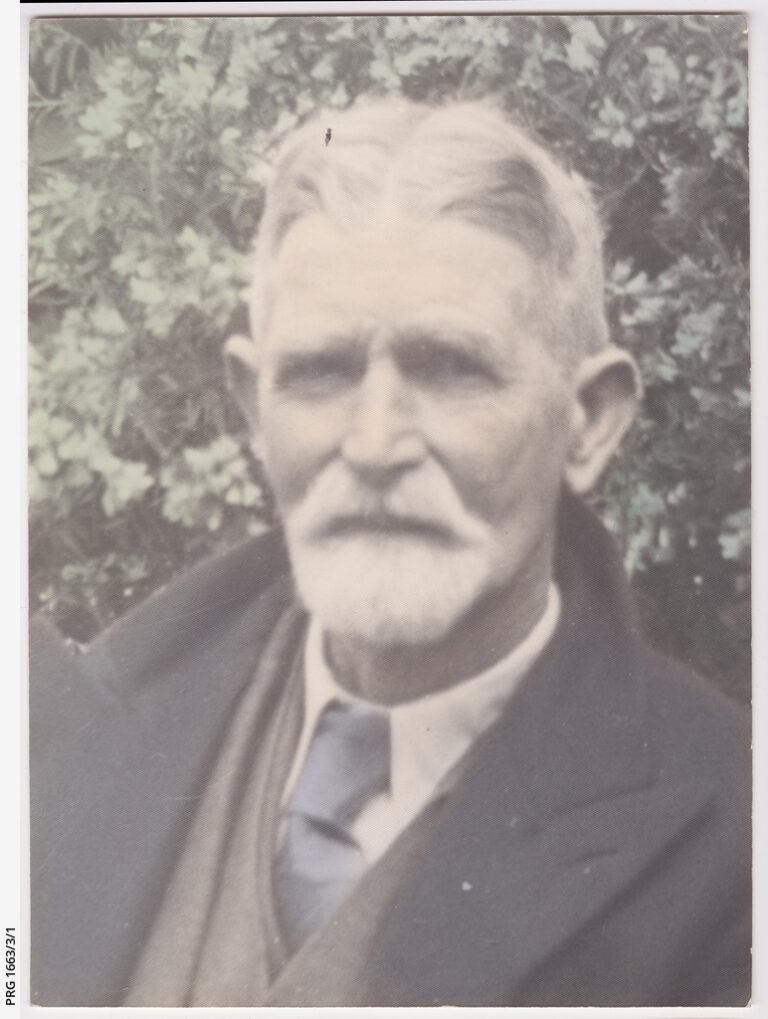21 Mar 2023 Live Like a Gardener: A Unique look at Anlaby Station’s Gardener’s Cottage

Introducing Henry
Henry Dutton inherited Anlaby Station in 1890 from Frederick Dutton, his uncle, becoming only the second owner of the estate in fifty years. Upon inheritance, Henry’s circumstances changed dramatically: he went from working a day job as a bank manager at Mount Pleasant to becoming one of the most extensive landowners in the country, with a vast fortune to match. Henry, a second-generation Dutton family member in Australia, was a famously keen gardener. His passion had sparked before his arrival at Anlaby: Henry received prizes for pelargoniums, begonias, bulbous dahlias, ferns, and more, at some of the annual shows held by the Mount Pleasant Agricultural, Horticultural, and Floricultural Society in the 1880s. He read up-to-date literature on garden practice and design and constantly sought to improve and expand his private collection.
Inheriting Anlaby gave Henry the finance to invest heavily in gardening. One of his first projects was the construction of an enormous conservatory designed and built by A. Simpson & Son, based in Adelaide. The conservatory was the first of a number of buildings – from a pelargonium house, to a cucumber house – to be built to the north of the Anlaby homestead. To the south, he constructed ferneries, shade houses, an Apple House –used for storing apples and other fruit and vegetables – and established extensive roseries.
In all, Henry expanded the private gardens at Anlaby to ten acres – the size of the gardens today – and even planted two arboretums for exotic species of trees imported from nearly every corner of the globe. Many of the trees he planted – oaks, maples, pines, cedars, and more – now form part of a nationally important collection of listed trees.


A garden of this scope and variety could not be maintained and managed alone; it required expertise and many willing hands. To this end, in March 1900, Henry hired a man called Thomas Leslie to work as the Head Gardener.
Born in Scotland in 1860, Leslie worked at Kilkerran Station, Ayrshire, until his mid-twenties. He arrived in Australia per the RMS Orizaba in January 1888 when it docked at Melbourne. It is not entirely clear what he did for the next decade, though just after the turn of the twentieth century he worked at Anlaby.
As Head Gardener, Leslie managed and instructed up to thirteen gardeners who assisted him with maintaining Henry’s grand vision, though his own responsibilities were still vast. He carted water, watered shrubs and trees, potted pelargonium bulbs, picked apples, grapes and figs, sowed pansy seeds, collected sphagnum moss for potting orchids, mixed soil, clipped hedges, mowed lawns, and much, much more. Leslie’s annual wage was £175 ($29,500 adjusted for inflation), which was three to five times as much as the assistants under his instruction.
He wrote on 22 February 1912, “Carting water for and watering trees, shrubs etc., potting up some new Amaryllis bulbs just received from Wm. Bull & Sons London. Cleaning and tying up plants in Stove.”
The following day his duties changed again: “Carting water for and watering Shade Houses, Trees Shrubs etc. Cracking pods, cleaning plants etc. Sent away Grapes and Eggs for the Squire to Kingscote.”
Leslie habitually recorded the weather at the end of each day’s entry, including the minimum and maximum temperature and wind direction. His diary vividly illustrates the daily routine of maintaining the extensive gardens at Anlaby. He recorded when Henry Dutton – known as ‘Squire Dutton’ – visited Anlaby, as well as when he travelled to one of his holiday houses or fully-staffed yacht, Adele.
Thomas Leslie worked at Anlaby Station until Henry Dutton died in 1914. With Henry’s finance and passion, and Thomas’ physical work, they created one of the greatest gardens in Australia. Leslie later found work at the Botanic Gardens in Adelaide, where, in 1928, he worked as Chief Plant Propagator.
By many accounts, Henry Dutton was an admired employer. Following his death on 25 August 1914, Adelaide-based paper, The Journal, wrote, “No one spoke more highly of him than his employees, and when he was stricken on Sunday evening, August 16, the little community at Anlaby was deeply concerned. Mr Dutton had been ailing for some time, and the fact he was too unwell to attend service [on] Sunday afternoon – the first time in their knowledge he had missed while he was at home – somewhat prepared them for bad news.”
Examples of his generosity to his employees can be found in the built heritage at Anlaby.


Seeing the dire need for staff accommodation in 1904, Henry made it his job to provide more accommodation for staff on site. He set about constructing quarters for grooms, whose job it was to groom and care for the dozens of horses on site, as well as accommodation for the manager, overseer, and kennel master. Henry also imported flat-pack galvanised-iron cottages to be erected on the hillside.
The two cottages provided accommodation for the Head Gardener, Thomas Leslie in this case, and the Head Coachman, who was called William McAinsh (more on him at a later date). These cottages were not solely constructed of galvanised iron; interior insulation was added, stone walls supported brick chimneys, and in-built wooden furniture and decor provided functional living space. Leslie’s cottage was a comfortable five rooms.
Thomas Leslie’s former home, known today as the Gardener’s Cottage in his honour, is a Bed and Breakfast. The galvanised-iron cottage has been elegantly renovated to accommodate up to six guests.
The Gardener’s Cottage boasts three Queen bedrooms with beautiful garden views that would make Leslie proud. Guests can make themselves at home in one of two comfortable lounge rooms. There are also three exquisite modern bathrooms – one of which is ensuite – and a fully-equipped kitchen. There is a private garden to entertain and relax, and, of course, guests can wander through the main garden established by Henry and Thomas, and marvel at the extraordinary vision both men created.
When visiting Anlaby decades later, Australian author Miles Franklin noted the lack of Australian natives and described the exotic trees close to the house as a ring designed to keep Australia out. This same feeling can be felt today, more than a century after Henry and Thomas established an exotic garden of wide renown. That said, adventure beckons beyond Anlaby – guests staying at the Gardener’s Cottage can explore Kapunda, the site of the first commercial copper mine in the country, or the Barossa and Clare Valley wine regions.
Figure 1: Henry Dutton, c. 1880. Source: SLSA PRG 396/227/5. With permission from the Dutton family.






